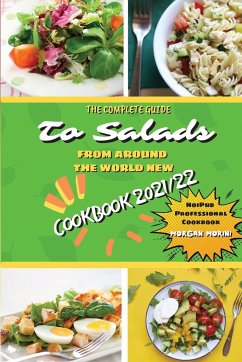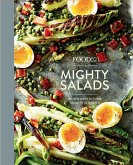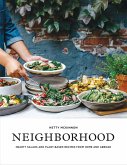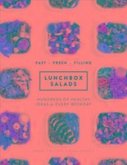Introduction Salad is versatile and quick to prepare dish that is often associated with the idea of dieting. When we talk about diets or weight loss, the first thing that comes to our mind is a sad little bowl of lettuce and julienne cut carrots. In reality, if properly seasoned and enriched, a salad can be transformed into a tasty dish rich in nutrients and beneficial properties. Rich salads in the summertime Especially during the summer, when you have very little desire to cook, everyone wants to bring to the table salads that are quick to prepare, nutritious, cold, and tasty. We can prepare summer salads based on cereals, such as rice, spelt, barley or quinoa, but also summer salads based on vegetables or legumes, such as chickpea salad, potato salad or grilled vegetable salad. With this book, we would like to give you some tips to prepare excellent complete salads that provide all the nutrients (micro and macro) we need. How can a salad become a unique dish? Let's see what the "rules" to be followed to prepare a healthy and complete salad from a nutritional point of view are. 1) Use at least 3-4 types of vegetables or greens To prepare a salad that is rich in minerals, vitamins and various antioxidants, it is essential to use more types of vegetables of different colors. In addition to the classic lettuce (or other varieties of leafy salad) you can add: Ø Cherry tomatoes Ø Cucumbers Ø Carrots Ø Raw spinach Ø Raw zucchini julienne cut Ø Raw peppers Ø Radishes Ø Rocket Ø Savoy cabbage cut into strips Ø Radicchio Ø Red onion Ø Celery Ø By varying the ingredients from time to time, you can prepare delicious and colorful salads. 2) A source of complex carbohydrates Complex carbohydrates are an essential source of energy and should not be missing, in the right quantities, in a healthy and balanced diet. We can choose to accompany our salads with wholemeal bread (a 50g) or a piadina, or we can add toasted durum wheat bread cut into pieces. 3) A source of protein In a self-respecting salad should not miss the proteins. Also in this case, we can indulge ourselves and choose at our pleasure the ingredient to be used among: Fish such as tuna, salmon or mackerel au naturel Boiled legumes Low-fat cheese such as milk flakes or ricotta cheese Tofu One hard-boiled egg Grilled chicken breast cut into small pieces 4) Don't exaggerate with fats and dressings A big salad is not always a light dish, especially if in addition to oil we add dried fruit or avocado (which has 160kcal and 15g of fat per 100g). We can obviously add dried fruit (maximum 15g) but then we must pay attention to the amount of oil we use for seasoning. As for avocado, however, I usually never use it in salads because I prefer to consume the fats in oil and dried fruit. As for the oil, my advice is not to exceed a tablespoon and a half. To make your salads tasty, even using little oil you can prepare emulsions, such as oil, lemon (or vinegar), and various spices that allow us to reduce the addition of salt.
Hinweis: Dieser Artikel kann nur an eine deutsche Lieferadresse ausgeliefert werden.
Hinweis: Dieser Artikel kann nur an eine deutsche Lieferadresse ausgeliefert werden.








